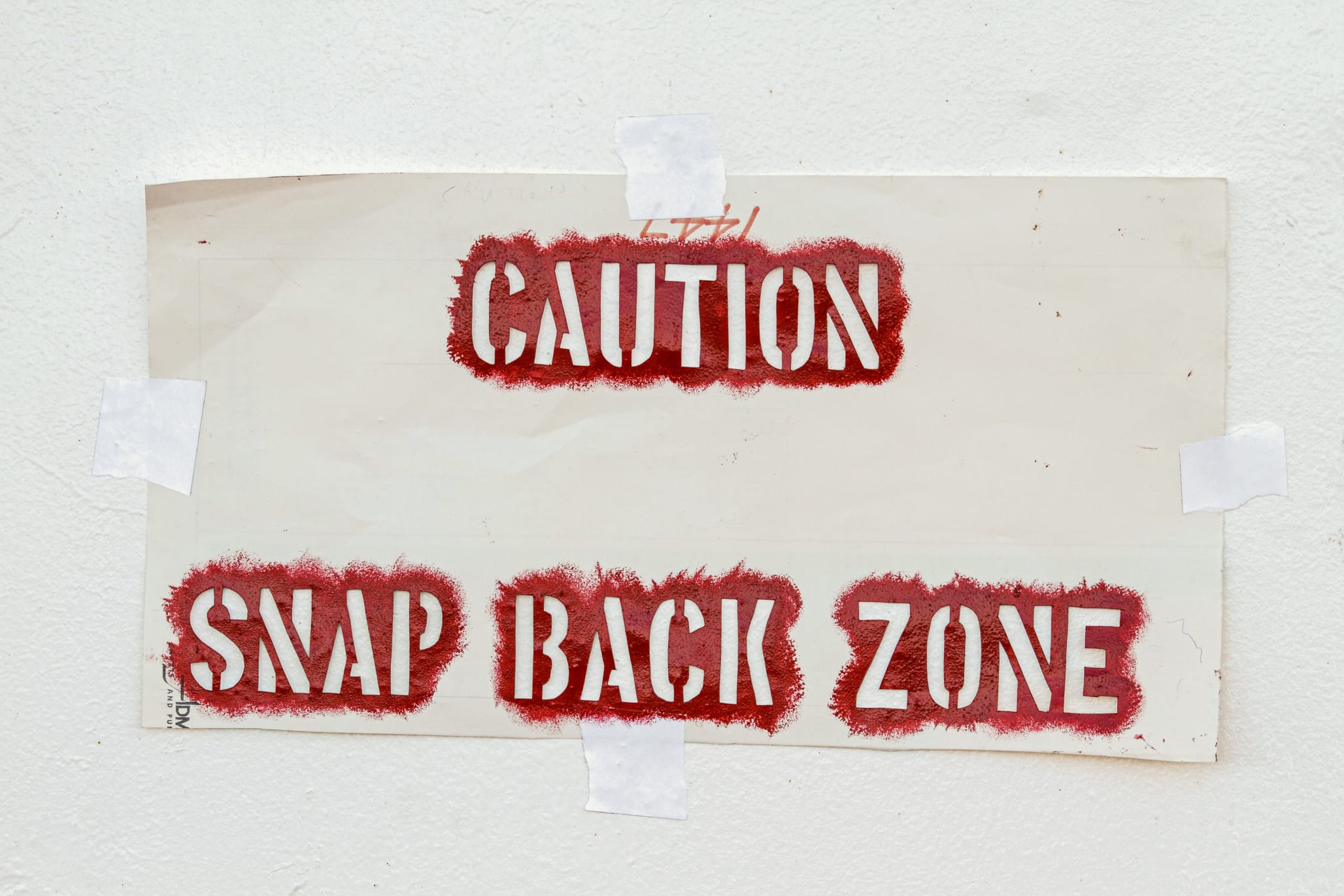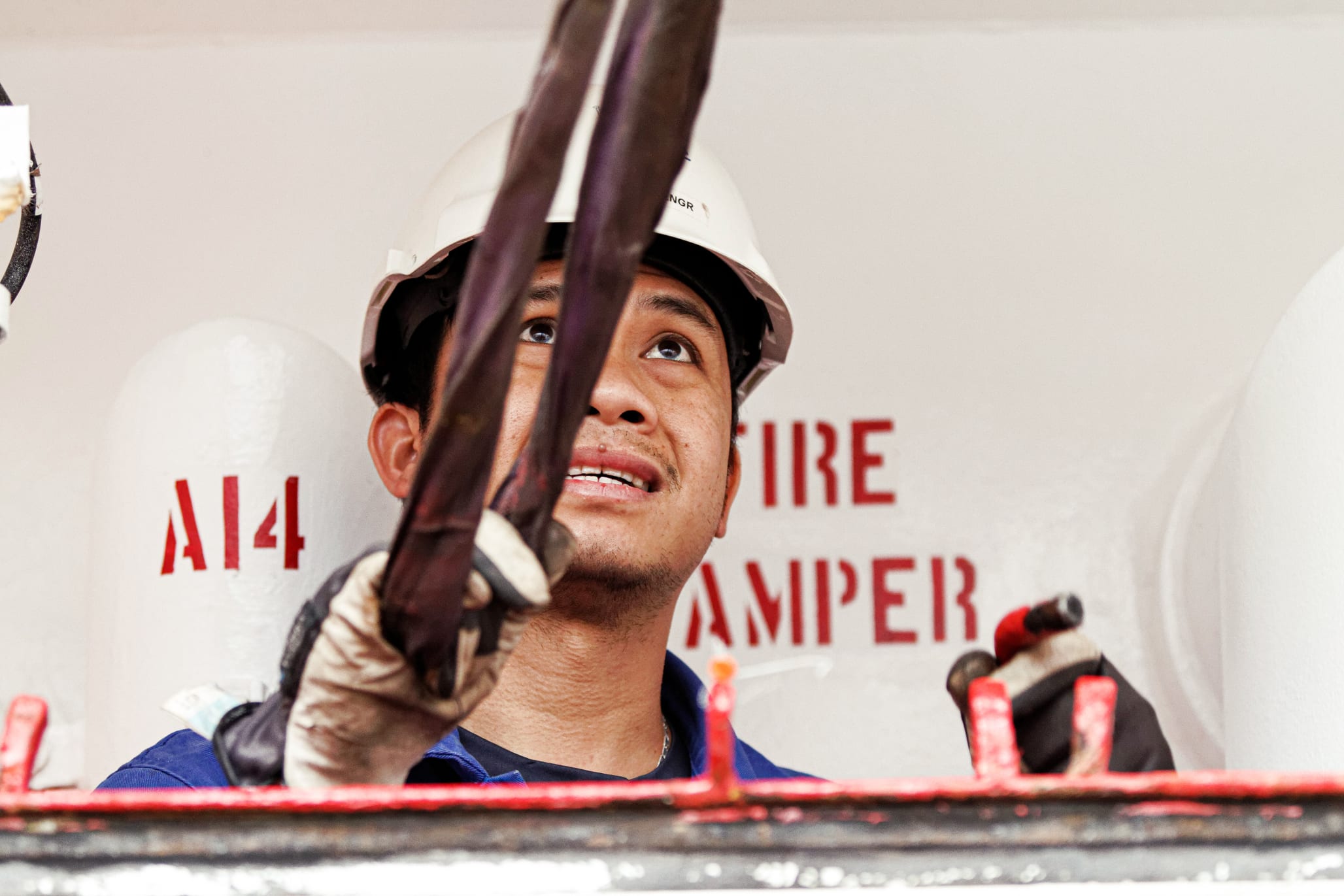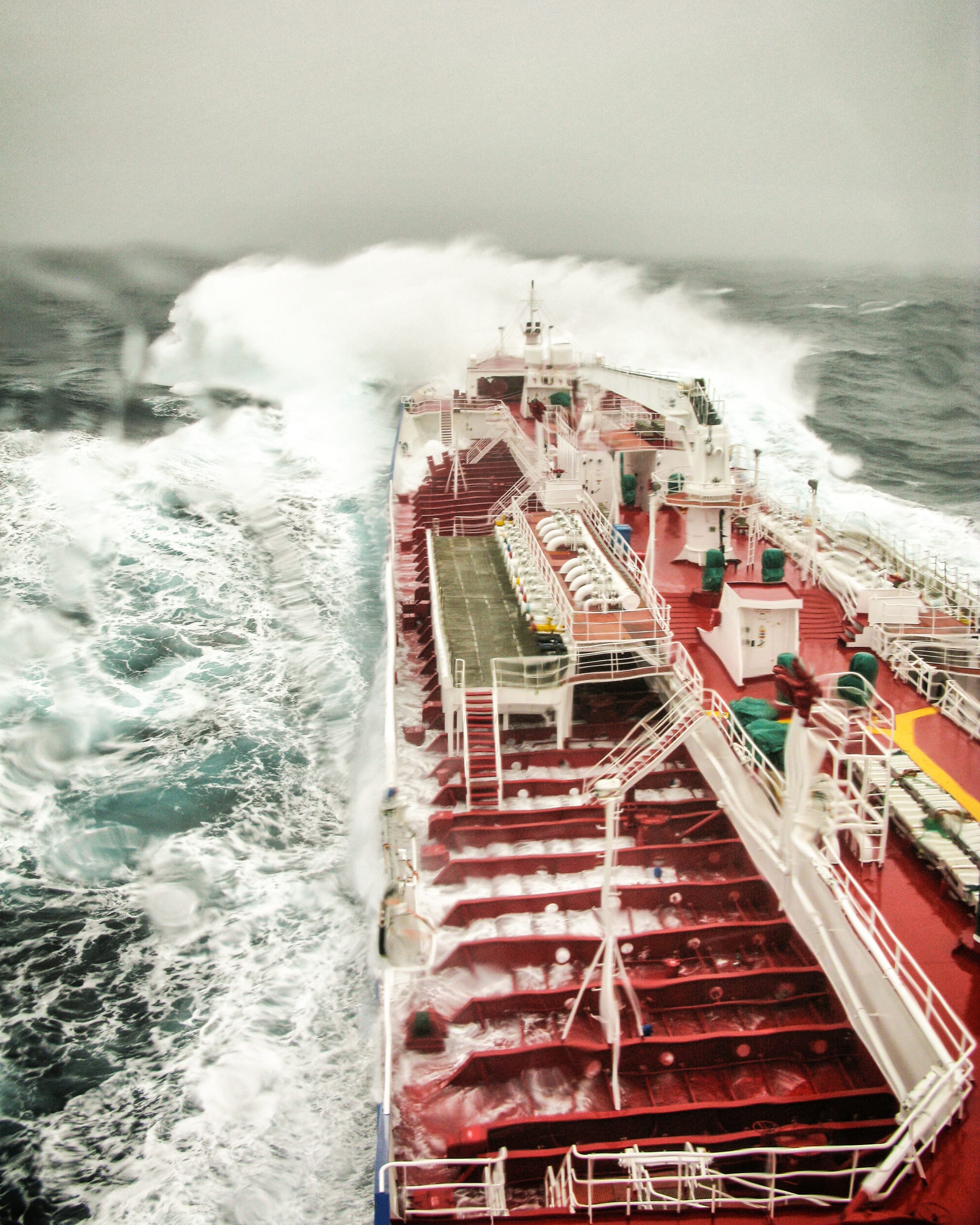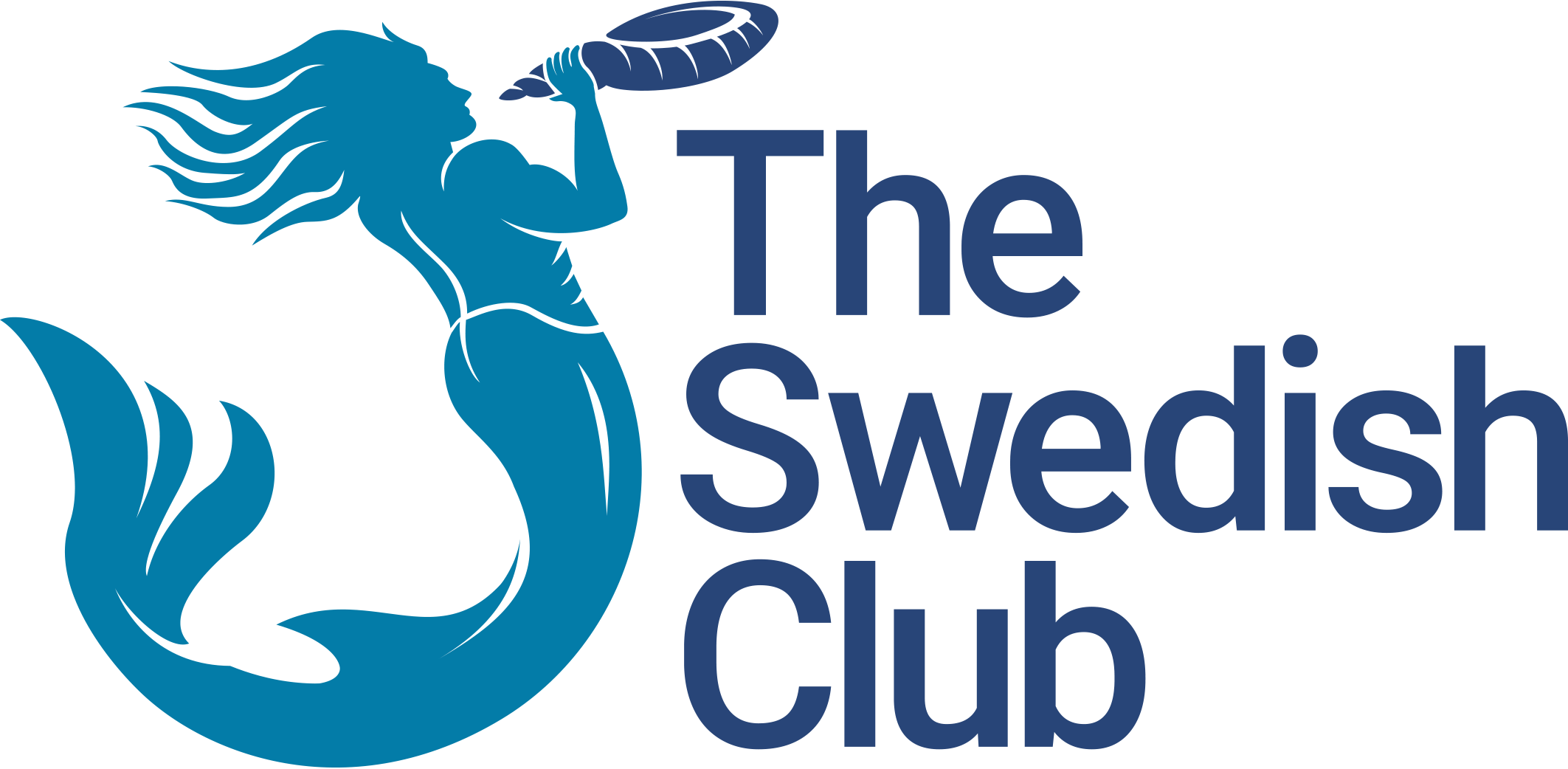Familiarization and Hazards
Working on a ship is a hazardous occupation to which one is exposed as soon as one steps on board. It is necessary to understand the hazards on board as well as equipment and procedures provided to avoid the risks. There are several types of equipment onboard a ship involving safety hazards. All crew must be aware of likely dangers concerning this equipment. During this course, you will learn about emergency procedures and how to protect your self and your team when working onboard a ship. What is an emergency, how do different alarm signals sound like, and when is PPE needed?

Communication, ship familiarization and knowledge of different types of risk are essential when trying to avoid hazards onboard. Photo: Jörgen Språng
You will learn how to work to prevent pollution of the marine environment, both by knowing more about the construction of the ship and knowing how to dispose of garbage and sewage in the right way. You will also learn more about emergency plans and international conventions. This course highlights the importance of teamwork for a safe and healthy work environment. You can in different ways contribute to effective relations and a positive atmosphere onboard, which you can read more about in the coming lessons.
First, we will take a closer look at the different hazards onboard and how they might be dangerous.
Different Types of Hazards Onboard
Onboard, certain hazards can be hard to eliminate or even do anything to ease them. It is therefore important to have knowledge about these hazards and be aware of the existing risk. Down below are some of these hazards describe, but keep in mind that there could be many more than these.
Gangways
Likely hazards are an insufficient length of the gangway, or that the angle of inclination is outside of specified limits. The gangways may not be adequately rigged, nor adequately secured; they can be of a poor standard and not well maintained. Dynamic changes due to environment (tidal water, traffic, etc.) can affect the gangway, as well as its position (close to dangerous operations, cargo, etc.) and weak lighting.
Safety Net
Safety nets may not be rigged appropriately or not adequately secured. They can be too small and of a poor standard or not well maintained.
Main Deck
Likely hazards at the main deck are slips, trips, and falls. There might be ongoing dangerous operations or dangerous substances present. Water on deck during rough weather can be a hazard as well as ship movement that could affect stowage of cargo and loose equipment. Dangerous permanent fittings can be un-marked, open hatches can be hazardous and so can insufficient deck lighting during darkness.
Holds and Hatches
Likely hazards around holds and hatches are slips, trips, and falls. There might be ongoing dangerous operations or dangerous substances present. Remotely operated hatches or doors, or not adequately secured open or closed hatches kan be hazardous. Ship movement could affect the stowage of cargo and lose equipment, and it may be dangerous, as well as permanent fittings that aren’t marked. Overhead load during cargo operations can be hazardous, so can insufficient lighting and poor standard.
Forecastle and Poop Deck
Just like on the main deck likely hazards are slips, trips, and falls, but also ongoing mooring-, anchoring- or towing operations. Water on deck during rough weather can be a hazard as well as ship movement that could affect stowage of cargo and loose equipment. Dangerous permanent fittings can be un-marked, open hatches can be hazardous and so can insufficient deck lighting during darkness.
Windlass, Anchors, and Winches
Likely hazards are a crew that isn’t familiar with the equipment and no communication with the bridge. During anchoring particles and dirt can com flying, and an anchor lowered with uncontrolled speed is a hazard. Due to high load or force a chain, rope or wire can break, and too high force on brakes could burn the brake lining. Other likely hazards are dangerous permanent fittings that aren’t marked, standing in a bight, poor standard, and getting hit by a breaking rope, wire, or chain.
Cranes or Derricks
Likely hazards around cranes and herrics are a crew that isn’t familiar with the equipment, exceeding boom limiting angles and exceeding Safe Working Load (SWL). Limit switches may not be working, and lifting operations can be unsupervised. There can be poor standard, an overhead load, they can be wrongly stowed, and the load may not be properly slung.
Manifold and Deck Pipeline System (on a tanker)
There are a few likely hazards, like the release of flammable, toxic, or corrosive vapour if any joint or valve is broken, or when connecting/disconnecting a loading hose or arm. Another hazard is the exposure of hazardous or toxic vapour/liquids, and the risk of fire or explosion if a substance is ignited. High pressure in pipelines during discharging is a hazard, as well as poor standard.
Accommodation
Likely hazards around the accommodations are the presence of flammable, toxic, or corrosive substances in air condition if such is released and AC is not set to re-circulation. Other hazards can be slamming or moving doors in rough weather, poorly secured items that fall during harsh weather, and the risk of slips, trips, and falls. There is a risk of being disorientated in case of emergency escape if the crew member isn’t familiar with the ship.
Bridge
Likely hazards at the bridge are slips, trips, and falls in the night-time due to insufficient lighting. If personnel that isn’t familiar with the bridge equipment is pushing any buttons, it can affect the safe operation of the ship. Other hazards at the bridge are slamming or moving doors in rough weather, as well as poorly secured obstacles falling during stormy weather.
Engine Room
Likely hazards in the engine room are slips, trips, and falls, reduced hearing if hearing protection isn’t used, slamming or moving doors in rough weather, and poorly secured obstacles that are falling during rough weather. If personnel that isn’t familiar with the engine room equipment is carrying out the wrong task, it can affect the safe operation of the ship. Other hazards can be a faulty operation of watertight doors, fire due to fuel leakage, inhalation of CO if any exhaust pipe is leaking and burns from any hot surface.
Moving Machinery
Clothing, fingers, etc. can get caught in moving machinery such as grinding wheels, winch drums, gears, flywheels, etc.

Head injuries can easily be caused by low doorway entrances, overhead loads, falling equipment, or material. Photo: Jörgen Språng.
Dangerous Situations and Possible Injuries
Slips, Trips, and Falls
The hazard slips, trips, and falls are always present, wherever you are onboard a ship. The slips, trips and falls often happen due to slippery surfaces (oil, grease, garbage, water, ice, etc.) or obstructions (pipelines, welding cables, lashing eyes, wires, ropes, etc.).
Head Injuries
Head injuries are caused by low doorway entrances, overhead loads, falling equipment or material, etc.
Falling From Heights
Many shipboard operations include the risk of falling from heights. It could be fall through open manholes, unfenced tween-decks, loose or missing gratings, etc.
Burns
There are several systems or operations onboard involving the risk of getting burned. It could be from steam pipes, hot machinery, welding sparks, etc.
Eye Injuries
An eye injury can be caused by chipping, welding, use of chemicals, etc.

Extreme weather affect the safety onboard. Photo by Jörgen Språng.
External Conditions
Some conditions are another thing that can not be affected. When being in contact with any of the following conditions, keep in mind to be extra cautious about making sure that no one gets hurt or injured.
Extreme Weather
Extreme weather will make loose items moving around and creating a hazard for the personnel. Also, secured items will move around if they are not lashed sufficiently.
Lack of Oxygen
The atmosphere of an enclosed or confined space is potentially dangerous. Space might be deficient in oxygen.
Hydrocarbon and Toxic Gases
The risk of being exposed to hydrocarbon and toxic gases differs between the type of ship. Generally, the highest risk of exposure is on chemical tankers, but there are also several other specialist ships handling substances containing hydrocarbon and toxic gases.
Fire or Explosion
Can arise due to failure or faulty operation of equipment, to self-ignition caused by carelessness with open fire or smoking in the bunk.


